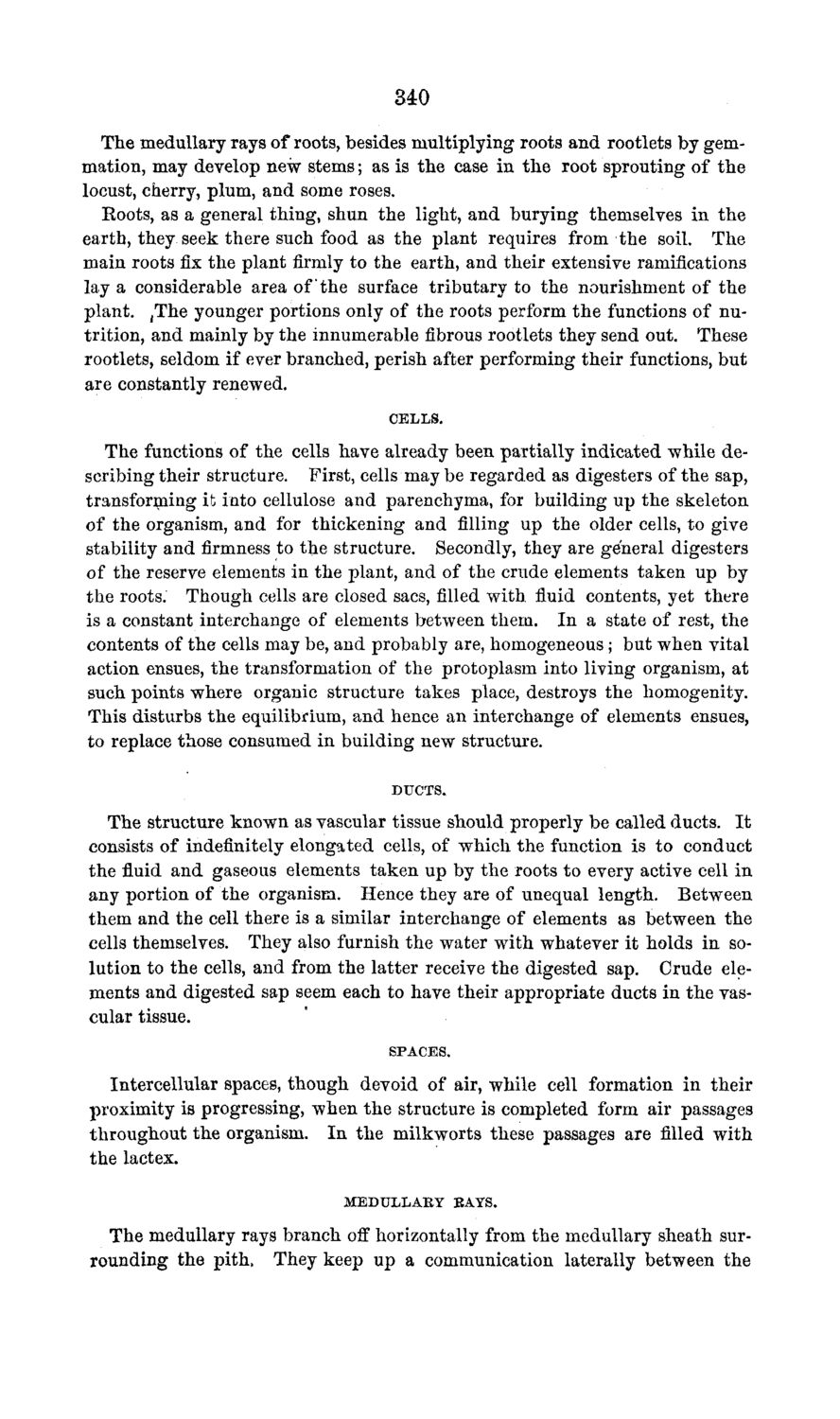| |
| |
Caption: Board of Trustees Minutes - 1869
This is a reduced-resolution page image for fast online browsing.

EXTRACTED TEXT FROM PAGE:
340 The medullary rays of roots, besides multiplying roots and rootlets by gemmation, may develop new stems; as is the case in the root sprouting of the locust, cherry, plum, and some roses. Roots, as a general thing, shun the light, and burying themselves in the earth, they seek there such food as the plant requires from the soil. The main roots fix the plant firmly to the earth, and their extensive ramifications lay a considerable area of the surface tributary to the nourishment of the plant. ,The younger portions only of the roots perform the functions of nutrition, and mainly by the innumerable fibrous rootlets they send out. These rootlets, seldom if ever branched, perish after performing their functions, but are constantly renewed. CELLS. The functions of the cells have already been partially indicated while describing their structure. First, cells may be regarded as digesters of the sap, transforming it into cellulose and parenchyma, for building up the skeleton of the organism, and for thickening and filling up the older cells, to give stability and firmness to the structure. Secondly, they are general digesters of the reserve elements in the plant, and of the crude elements taken up by the roots. Though cells are closed sacs, filled with, fluid contents, yet there is a constant interchange of elements between them. In a state of rest, the contents of the cells may be, and probably are, homogeneous; but when vital action ensues, the transformation of the protoplasm into living organism, at such points where organic structure takes place, destroys the homogenity. This disturbs the equilibrium, and hence an interchange of elements ensues, to replace those consumed in building new structure. DUCTS. The structure known as vascular tissue should properly be called ducts. It consists of indefinitely elongated cells, of which the function is to conduct the fluid and gaseous elements taken up by the roots to every active cell in any portion of the organism. Hence they are of unequal length. Between them and the cell there is a similar interchange of elements as between the cells themselves. They also furnish the water with whatever it holds in solution to the cells, and from the latter receive the digested sap. Crude elements and digested sap seem each to have their appropriate ducts in the vascular tissue. SPACES. Intercellular spaces, though devoid of air, while cell formation in their proximity is progressing, when the structure is completed form air passages throughout the organism. In the milkworts these passages are filled with the lactex. M E D U L L A R Y BAYS. The medullary rays branch off horizontally from the medullary sheath surrounding the pith, They keep up a communication laterally between the
| |